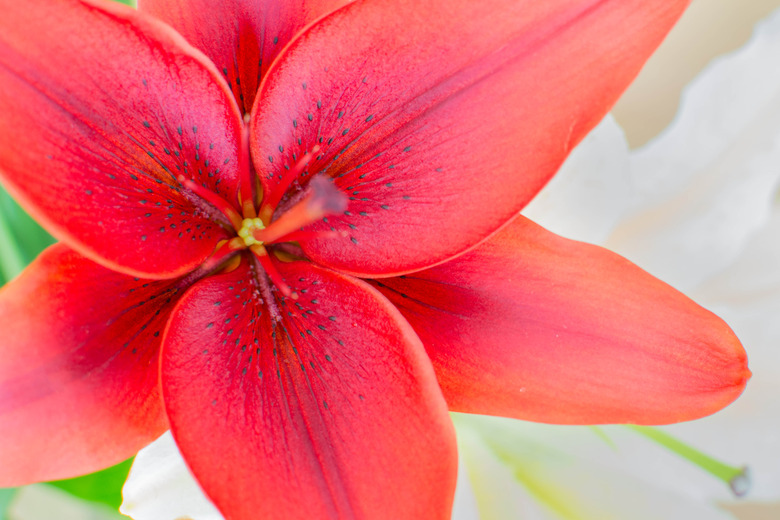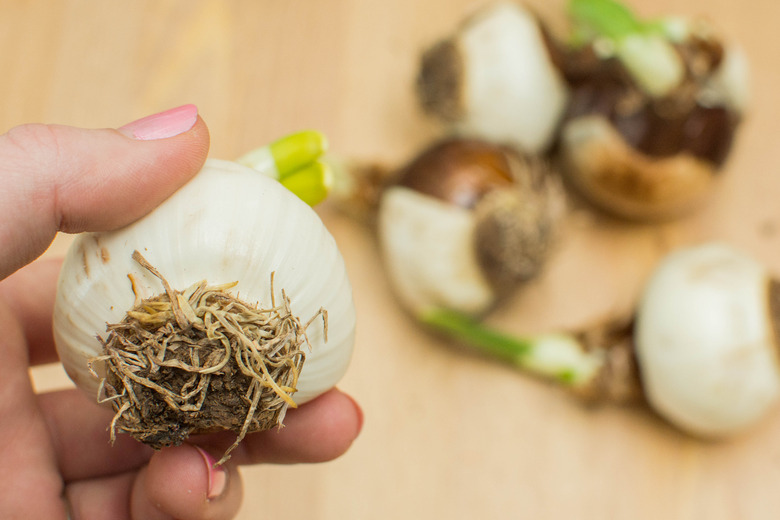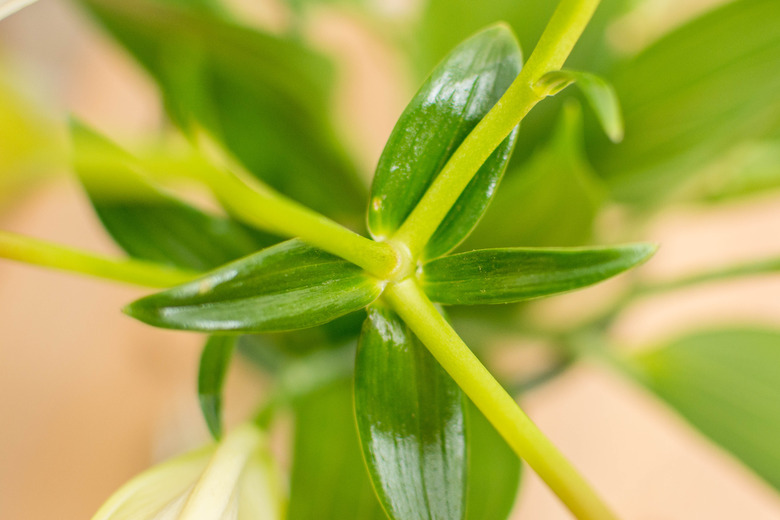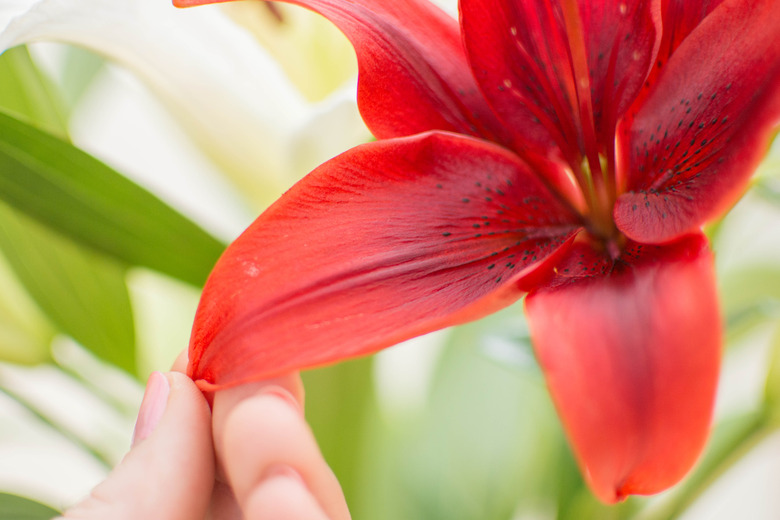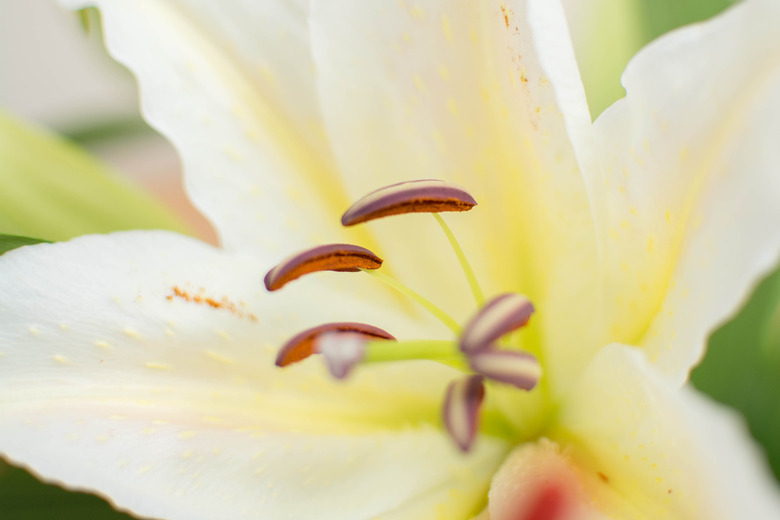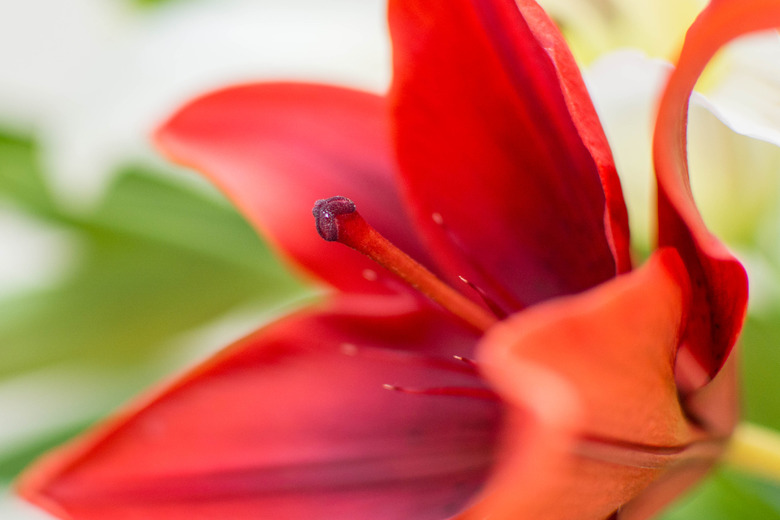The Parts Of A Lily Flower
Flowers are more than just a pretty and colorful addition to your garden. They are living, functioning plants with complex anatomical systems. If you are looking for a real life science project, dissecting a flower, like a lily, can be a great lesson for you and something to share with children.
Bulb
Bulb
Look at the bottom of a whole lily plant. Rather than just roots, a lily has a bulb on the bottom. This bulb stores nutrients and saves them up for the next season's bloom. Lilies bloom annually so this bulb system sustains them during the winter months. The roots that grow from the bulb absorb moisture from the soil and also keep the plant firmly anchored in the ground.
Stems and Leaves
Stems and Leaves
Observe the stems and leaves. Many different species of lilies are grown, so their stems and leaves vary. Some stems are only a few inches tall, while other tall varieties can grow as high as 8 feet. The leaves make food for the plant, which is then stored in the bulb.
Petals
Petals
Point out the petals of the flower. Pluck the petals off, as well as the sepals. Sepals are the leafy parts that are underneath the petals. They can be green or they can match the color of the petals. The sepals are what initially encase the immature flower bud and protect it. Lily petals often have lines and dots on them. These markings actually serve as a map for insects, leading them to the nectar.
Stamen
Stamen
Identify the male parts of the flower. The stamen consists of two parts: the anther and the filament. The filament is the stem-like part that holds up the anther and anchors it to the center of the flower. There are usually several stamens around the inside of the lily. The anther is the rounded section at the top of each filament. The anther holds the pollen of the flower. If you tap the anther or rub it against a finger, you will be able to see some pollen come off.
Pistil
Pistil
Find the female parts of the flower. The pistil is the term for this part. It includes the stigma, style, ovary and egg cells. The pistil is the large center part of the flower. At the top of the pistil is the stigma. The stigma is rounded and is sticky to the touch. It is sticky so that it can catch pollen. It is attached to the ovary with a stem-like portion called the style. The ovary is the big round portion at the bottom of the pistil. Using a knife, slice the ovary in half so you can see a cross section. It contains the unfertilized eggs as well as seeds.
